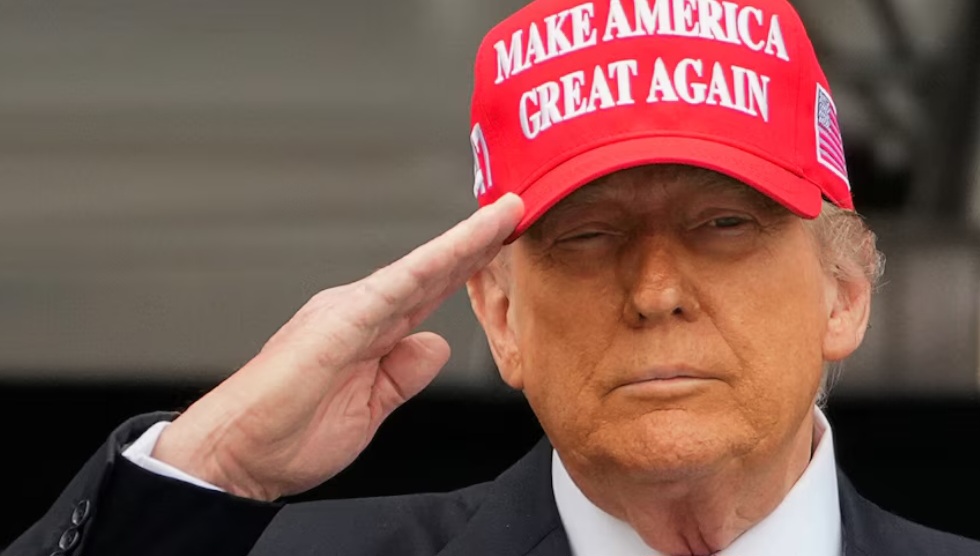By: Sonalika Singh, Research Analyst, GSDN

“Make America Great Again” (MAGA), first coined by Donald Trump during his 2016 presidential campaign, has evolved into a potent political movement grounded in nativist nationalism and populism. Its core message asserts that America has lost its former prosperity and global status due to issues like immigration, globalization, and a perceived cultural decline. Since then, MAGA has left a lasting imprint on Republican politics, public discourse, and international right-wing strategies.
But in 2025, with Trump back in the White House and brandishing slogans reminiscent of MAGA’s origins, the question arises: Is MAGA really happening? To answer, we must examine its electoral strength, ideological unity, institutional influence, ideological potency, and cultural reach. This article delves into MAGA’s current reality from its increasingly visible power to internal rifts, its blueprint for change, and the fragile coalition that sustains it. Only then can we evaluate whether MAGA is a transformative movement reshaping American politics or a personalized brand vulnerable to fractures and contingent upon one man’s influence.
MAGA is more than campaign sloganeering it represents a deeply embedded worldview. According to Britannica, it blends nativist resentment of immigration and globalization with a nostalgic idealism about America’s past. Among Republicans, about half to 60% identify as MAGA-aligned, making it the dominant faction within the party. However, MAGA remains a minority on the national scale, with non-Republican Americans less likely to identify with it.
Beyond politics, MAGA has spawned a parallel economic ecosystem conservative-aligned businesses intentionally cater to its base. Prominent examples include Public Square (a conservative Yelp alternative) and GrabAGun, an online firearms retailer backed by Trump Jr. These ventures are not merely symbolic they’ve raised over US$ 179 million in IPO proceeds and generated meaningful revenue, indicating economic momentum beyond mere rhetoric.
MAGA-like ideologies are crossing borders. Terms such as “Make Europe Great Again” and conservative summits in London reflect a global resonance. While Trump’s foreign populism remains parochial, its theme’s identity, skepticism of globalization resonates among right-wing groups in Europe, Latin America, and beyond.
In July 2025, MAGA’s coherence was jolted by the controversy surrounding the Jeffrey Epstein files. Trump received intense pressure from MAGA influencers like Steve Bannon, Dan Bongino, and Nikki Haley to release grand-jury testimony against liberal elites. When the DOJ disclosed no such “client list,” many within MAGA perceived it as a cover-up.
This generated rare internal backlash at Turning Point USA’s summit, young MAGA leaders booed the administration’s approach and warned that disillusionment could erode support by up to 10%. Axios labeled it a crisis of faith within the base. Although Trump eventually dismissed the controversy and loyalists rallied back, the episode revealed friction MAGA’s predictive influence no longer guarantees command over its audience.
Internal MAGA tensions also arose over foreign and economic policy. Hardline MAGA members criticized Trump’s continued military aid to Ukraine and measured stance on Iran, suggesting he’s drifting from his “America First”. Meanwhile, the signature tax-cut initiative nicknamed the “Big, Beautiful Bill” (BBB) faced criticism conservatives celebrated it, but populists argued it betrayed working-class interests and spiked inequality. This economic divergence underscores the tension between Trump’s plutocratic policies and his working-class supporters.
The MAGA movement now straddles Donald Trump’s personal brand and a deeper ideological current. Trump remains indispensable his actions set movement direction, but MAGA influencers are increasingly vocal in policing deviations. Figures like Bannon and Carlson have publicly reprimanded Trump when they perceive he strays.
Analysts warn this relationship is fraught Trump seeks control, while true believers expect ideological fidelity. That friction tends to emerge over issues like transparency, executive overreach, and foreign alliances and they could intensify if Trump bends to institutional or donor pressures.
Project 2025 is the institutional architecture designed to convert MAGA sentiment into lasting power. Spearheaded by the Heritage Foundation and Trump-aligned officials, it consists of four components a detailed policy manual, a personnel database, training programs, and a “day-one” playbook. Its 900-page plan, Mandate for Leadership 2025, seeks to “deconstruct the administrative state” and accelerate conservative governance.
If enacted, Project 2025 would drastically reshape governance replacing civil servants with loyalists, subsuming independent agencies under the White House, curtailing federal equality and environmental enforcement, and bolstering executive authority. Critics liken it to a template for democratic erosion, with warnings about removing checks and balances and repositioning agencies as political tools.
Despite distancing statements during the 2024 campaign, Trump’s second term has adopted many of the plan’s recommendations. Brookings notes that almost two-thirds of Trump’s early executive actions match Project 2025’s proposals on deregulation, immigration, environmental rollback, and social issues. The Guardian concurs that Trump is using Project 2025 as a century-long governance blueprint.
Public opinion reflects serious concerns. A Navigator poll found most Americans fear that Project 2025 would grant unprecedented presidential power, roll back constitutional rights, and dismantle checks and balances. Legal scholars warn it amounts to democratic backsliding a rewiring of governance toward authoritarian control.
MAGA faithful view Project 2025 as a mechanism to institutionalize their agenda, ensuring permanence beyond electoral cycles. For opponents, it’s a warning sign revealing how ideology can morph into systemic overhaul.
Key MAGA influencers Steve Bannon, JD Vance, Elon Musk, Vivek Ramaswamy are already positioning themselves for future leadership roles. Whether they build successor movements or serve under a future Trump term will shape MAGA’s evolution.
MAGA’s base is an uneasy fusion of rural lower-middle-class populists and billionaire-aligned elites, united by shared suspicion of the liberal establishment. This coalition thrives on policy friction populists want tariffs, protectionism, and cultural conservatism, while elites back deregulation and business-focused governance. Historical parallels to past populist-authoritarian alliances suggest fissures are inevitable.
Young conservatives, especially those aligned with Turning Point USA, continue to champion MAGA ideals rank-and-file maintenance of “America First” rhetoric remains strong. Internationally, MAGA themes appear in conservative movements globally, though adaptations vary.
MAGA’s durability depends on managing internal tensions loyalty vs ideology, Trump vs institutions, populism vs plutocracy. If Trump maintains his authoritarian populist posture, MAGA may persist even grow. Absent Trump, ideological opponents or establishment Republicans might fracture the movement. The Epstein backlash hints at these fragilities, underscoring the continual risk of fragmentation.
So, is MAGA really happening? The evidence suggests yes, but not in a simple or monolithic way.
On one hand, MAGA remains a powerful force. Politically, it shapes Republican primaries and executive decisions. Economically, its parallel ecosystem including IPO-backed conservative platforms continues to expand. Globally, its rhetoric and themes resonate with right-wing movements abroad.
Yet internal tensions pose serious challenges. The Epstein files controversies, economic policy splits, and foreign policy misalignments reveal unseen cracks. Trump’s discomfort with ideological purists and his alliances with mega-capitalists create persistent friction.
Project 2025 exemplifies MAGA’s ambition an institutionalized, authoritarian-flavored blueprint capable of transforming governance. But mishandling ideological divisions or ceding control to non-populist elites could splinter the movement.
MAGA’s future hinges on alignment between leadership, ideology, and institutional structure. If Trump or his ideological heirs remain leaders, and Project 2025 continues driving implementation, MAGA is more than a moment it’s a political transformation underway. But if ideological coherence falters or Trump’s media grip diminishes, MAGA risks splintering into rival factions. In a polarized America, MAGA is undoubtably happening but whether it endures or implodes remains undecided.

About the Author
Sonalika Singh began her journey as a UPSC aspirant and has since transitioned into a full-time professional working with various organizations in the governance and policy sector. Over the years, she has developed a strong interest in international relations, security studies, and geopolitics, along with a deep passion for research, analysis, and writing. Her work reflects a commitment to insightful inquiry and meaningful contribution in the field of public affairs.


Great analysis. Analysing maga as a cultural, social and economic force, is really an insight.